ASRock Z590 Taichi Review: An Intel Motherboard with Moving Parts (and Thunderbolt 4)
by Gavin Bonshor on April 1, 2021 11:00 AM ESTGaming Performance
For Z590 we are running using Windows 10 64-bit with the 20H2 update.
Civilization 6
Originally penned by Sid Meier and his team, the Civilization series of turn-based strategy games are a cult classic, and many an excuse for an all-nighter trying to get Gandhi to declare war on you due to an integer underflow. Truth be told I never actually played the first version, but I have played every edition from the second to the sixth, including the fourth as voiced by the late Leonard Nimoy, and it a game that is easy to pick up, but hard to master.
Benchmarking Civilization has always been somewhat of an oxymoron – for a turn based strategy game, the frame rate is not necessarily the important thing here and even in the right mood, something as low as 5 frames per second can be enough. With Civilization 6 however, Firaxis went hardcore on visual fidelity, trying to pull you into the game. As a result, Civilization can taxing on graphics and CPUs as we crank up the details, especially in DirectX 12.
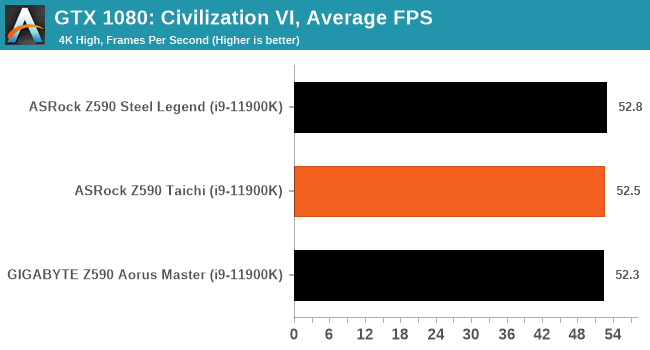
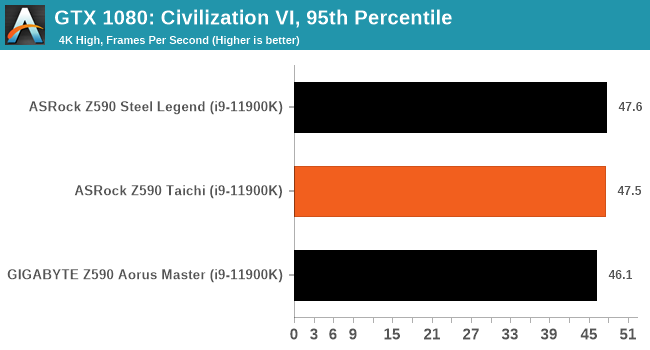
Shadow of the Tomb Raider (DX12)
The latest instalment of the Tomb Raider franchise does less rising and lurks more in the shadows with Shadow of the Tomb Raider. As expected this action-adventure follows Lara Croft which is the main protagonist of the franchise as she muscles through the Mesoamerican and South American regions looking to stop a Mayan apocalyptic she herself unleashed. Shadow of the Tomb Raider is the direct sequel to the previous Rise of the Tomb Raider and was developed by Eidos Montreal and Crystal Dynamics and was published by Square Enix which hit shelves across multiple platforms in September 2018. This title effectively closes the Lara Croft Origins story and has received critical acclaims upon its release.
The integrated Shadow of the Tomb Raider benchmark is similar to that of the previous game Rise of the Tomb Raider, which we have used in our previous benchmarking suite. The newer Shadow of the Tomb Raider uses DirectX 11 and 12, with this particular title being touted as having one of the best implementations of DirectX 12 of any game released so far.

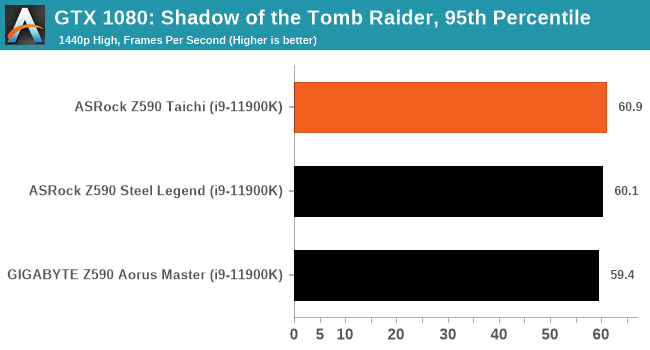
Strange Brigade (DX12)
Strange Brigade is based in 1903’s Egypt and follows a story which is very similar to that of the Mummy film franchise. This particular third-person shooter is developed by Rebellion Developments which is more widely known for games such as the Sniper Elite and Alien vs Predator series. The game follows the hunt for Seteki the Witch Queen who has arose once again and the only ‘troop’ who can ultimately stop her. Gameplay is cooperative centric with a wide variety of different levels and many puzzles which need solving by the British colonial Secret Service agents sent to put an end to her reign of barbaric and brutality.
The game supports both the DirectX 12 and Vulkan APIs and houses its own built-in benchmark which offers various options up for customization including textures, anti-aliasing, reflections, draw distance and even allows users to enable or disable motion blur, ambient occlusion and tessellation among others. AMD has boasted previously that Strange Brigade is part of its Vulkan API implementation offering scalability for AMD multi-graphics card configurations. For our testing, we use the DirectX 12 benchmark.
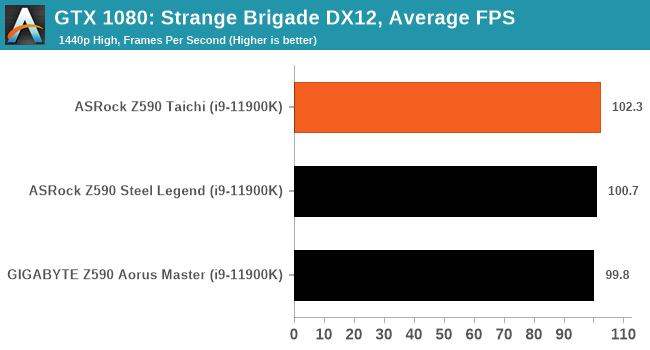
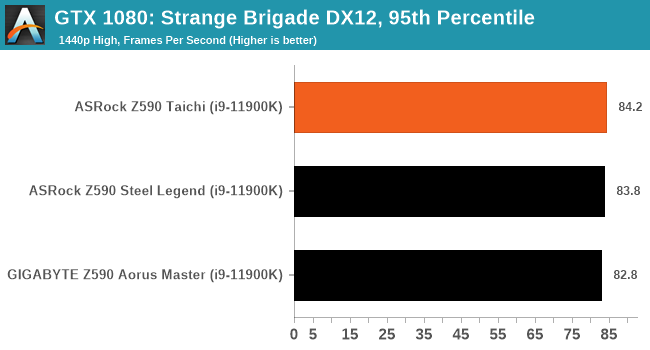


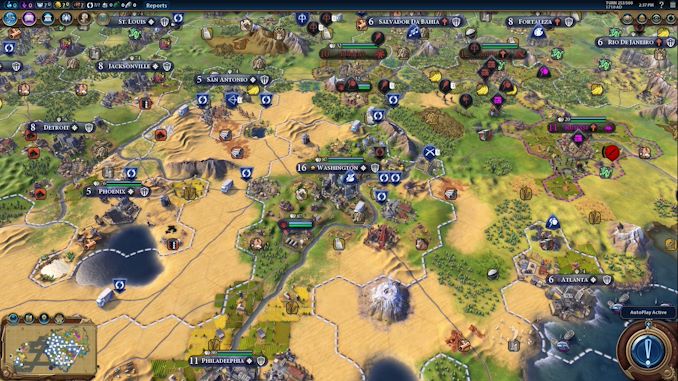
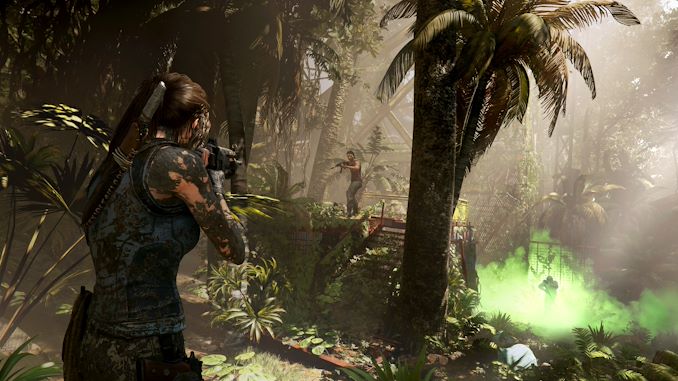









50 Comments
View All Comments
Cullinaire - Thursday, April 1, 2021 - link
What a gimmick. Instead of a stepper motor why not have a steam engine powered by the CPU heat.Molor1880 - Thursday, April 1, 2021 - link
Should have gone with a tiny sterling engine. That would make this joke a bit better.kachan64 - Friday, April 2, 2021 - link
Agree. Should have gone with that!YB1064 - Friday, April 2, 2021 - link
No 10GbE on a FOUR HUNDRED dollar motherboard?? No thanks.zanon - Saturday, April 3, 2021 - link
This, the money they put into the gimmick useless juno should have gone to networking instead. Though I suppose in fairness unlike AMD they have to work with severe bandwidth limitations so they can't just do every single useful feature. But that one should have been a priority.ZoZo - Saturday, April 3, 2021 - link
There's the same bandwidth on the Z590 platform as the X570.20 PCI-E 4.0 lanes from the CPU, and ~4 GB/s between CPU and chipset (through 4 PCI-E 4.0 lanes on X570, and 8 DMI/PCI-E 3.0 lanes on Z590).
And 10 Gb/s networking just needs 1.25 GB/s, so no severe bandwidth limitations from connecting it to a PCI-E 3.0 x1 link to the chipset.
TheinsanegamerN - Sunday, April 4, 2021 - link
The raichu line had 10gb as a selling point with the z200 and x400 vhipsets. For some reason asrock abandoned this idea and raised the price.TheinsanegamerN - Sunday, April 4, 2021 - link
Agreed. The whole reason to get a taichi was the 10gb ethernet onboard.Samus - Saturday, April 3, 2021 - link
This is about the level of gimmick I expected from ASRock, after all the brand is a second-rate Asus so they need to do these cheesy things to get attention.zotric - Sunday, October 10, 2021 - link
I must say I have had excellent support for my older ASRock Taichi board so don't write it off!